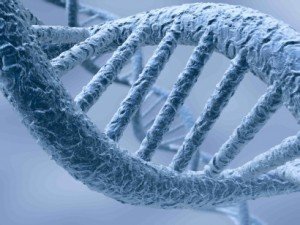Life was born complex, with the primordial ocean acting as a kind of genetic swap-shop over hundreds of millions of years as cells exchanged useful parts to effectively become a global mega-organism, says new American research.
 The last universal common ancestor (LUCA) is the label for a crude organism — probably one with structure sufficiently complex structure to be identifiable as a cell — from which all domains of life — plants, animals, fungi, algae — evolved.
The last universal common ancestor (LUCA) is the label for a crude organism — probably one with structure sufficiently complex structure to be identifiable as a cell — from which all domains of life — plants, animals, fungi, algae — evolved.
Gustavo Caetano-Anolies of the University of Illinois said today that all three “domains” or organisms on Earth make a protein with the same overall structure, then that structure was likely to have been in the “last universal common ancestor” (LUCA). Because a protein’s function depends heavily on its structure, it could indicate the capabilities of LUCA.
But a New Zealand scientist, Dr Anthony Poole at Canterbury University, has cautioned that the US researchers’ theory that one massive mega-organism split around 2.9 billion years ago into the three main groupings of life may have had alternative explanations. He told the New Scientist magazine: “Structure is known to be conserved when sequences aren’t”, but noted that two very similar structures could have evolved independently after LUCA.
Dr Poole, who has studied the history of enzymes known as ribonucleotide reductases (RNR) — which create the building blocks of DNA — and found no evidence that LUCA had some key types of them. He did find that one class of RNR originated in bacteria and spread — through horizontal gene transfer — to the two other “domains” of organisms, single-celled archaea, and the more complex eukaryotes that eventually evolved to plants and animals.
As he explained to the Science Media Centre:
“On whether LUCA possessed RNA or DNA, I can say that there is definitely a possibility that it lacked DNA. We can’t be completely sure because the ribonucleotide reductase (RNR) genes move around by horizontal gene transfer, which means that early evolutionary history has been partially erased. RNRs are required for making deoxyribonucleotides – DNA building block – and all cellular life is dependent on ribonucleotide reduction for making these. So while we can say this process evolved only once, we cannot say when it evolved: either it evolved before LUCA but the genes have transferred, obscuring the evolutionary trace, or it evolved later, and spread to all cellular life via horizontal gene transfer.
“What is interesting is that several of the key enzymes involved in DNA replication (copying) have evolved more than once. For instance, the DNA polymerases (which carry out the process of copying) from bacteria are unrelated to the DNA polymerases from archaea and eukaryotes (which share a common type of DNA polymerase). As a consequence, it is hard to say whether the DNA replication machinery had already evolved before the three domains diverged. In contrast, the RNA polymerases (which in modern cells are used for making messenger RNAs – working copies of genes used in the process of protein synthesis) definitely do trace back to LUCA. While they are not used for maintaining a genome (because all cellular genomes are DNA-based) I co-wrote a paper several years ago showing that they could in principle – they show proofreading and repair capacities. This is important because these capacities serve to ensure information is faithfully transmitted during the copying process. A subsequent study published in Science showed that my predictions were correct, lending weight to the possibility of a complex cellular ancestor with an RNA genome.
“So, to summarise: an RNA genome is plausible, we have not been able to definitively show that DNA was a feature of LUCA, despite all modern lineages now being dependent on it. I think that Gustavo and I come to similar conclusions on that point.”
Journalists registered at the SMC can log-in to the Resource Library, or contact the SMC to read the New Scientist article featuring Dr Poole.